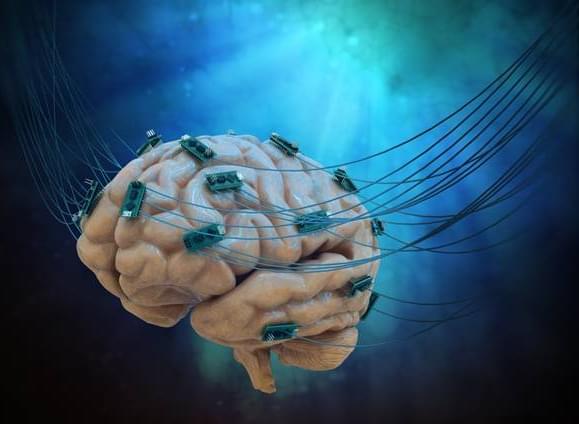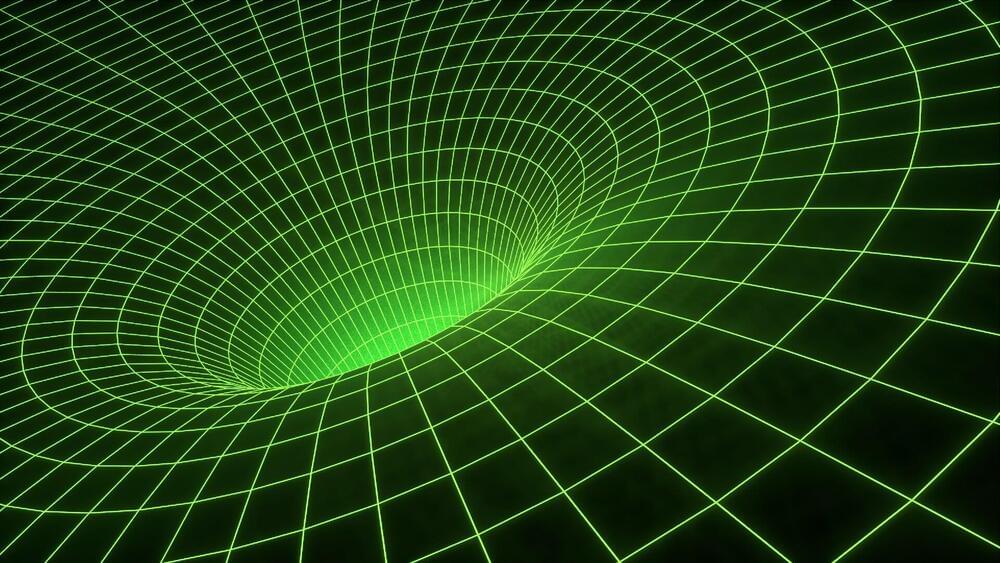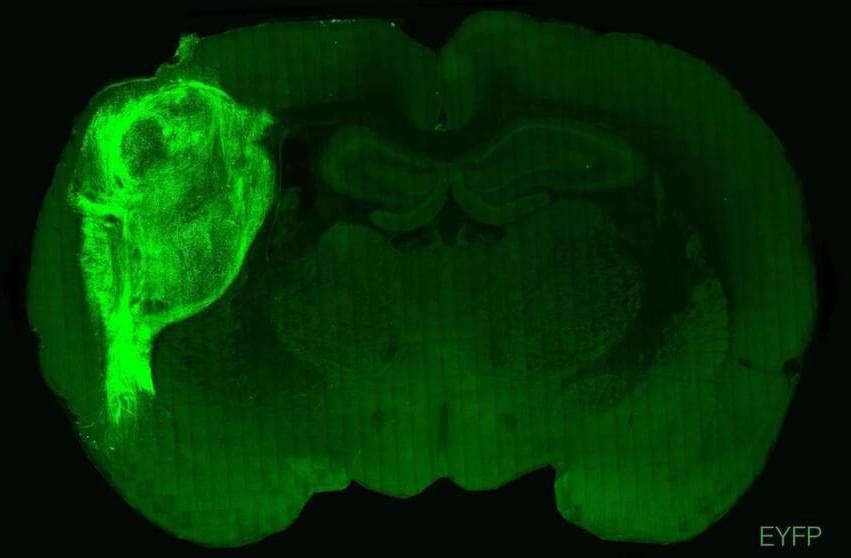Wake up and smell the cortex.



How long is the present? The answer, Cornell researchers suggest in a new study, depends on your heart.
They found that our momentary perception of time is not continuous but may stretch or shrink with each heartbeat.
The research builds evidence that the heart is one of the brain’s important timekeepers and plays a fundamental role in our sense of time passing—an idea contemplated since ancient times, said Adam K. Anderson, professor in the Department of Psychology and in the College of Human Ecology (CHE).

Because it CAN be done does not mean it SHOULD be done.
We humans have not yet developed a strong understanding of unintended consequences.
Human neurons can survive — and even develop — after being transplanted into newborn rats. But are they still rats?
Understanding the brain is one of the greatest goals of modern science. But parts of what we find out are more curious than we could have ever imagined. A new paper highlights one such discovery.
Researchers at the University of Stanford report that human neurons transplanted into newborn rats can grow and develop with the animal.

There’s an excessive amount of innovation embedded in right now’s cutting-edge pc chips, however not a lot of it’s as out-of-the-box because the considering that’s driving Australian startup Cortical Labs. The corporate, like so many startups with synthetic intelligence in thoughts, is constructing pc chips that borrow their neural community inspiration from the organic mind. The distinction? Cortical is utilizing precise organic neurons, taken from mice and people, to make their chips.
“We’re constructing the primary hybrid pc chip which entails implanting organic neurons on silicon chips,” Hon Weng Chong, CEO and co-founder of Cortical Labs, informed Digital Tendencies.
That is completed by first extracting neurons in two other ways, both from a mouse embryo or by remodeling human pores and skin cells again into stem cells and inducing these to develop into human neurons.
Dr Jordan B Peterson and Dr. Del Paulhus delve deep into the Dark Tetrad: Machiavellianism, Narcissism, Psychopathy, and the newly added Sadism. From these four traits, researchers can quantify much of the darkness of humanity, and begin to study it in a way that yields numerical results, and the potential to make substantial predictions.
Dr. Delroy Paulhus is a personality researcher whose work in dark personality traits, via a variety of psychometric methods, has yielded measures of the Dark Tetrad. His work has also validated measures of socially desirable responding, perceived control, free will and determinism, and over-claiming. His work has been published in over 150 articles and books, and his current citation count exceeds 43,000.
Dr Peterson’s extensive catalog is available now on DailyWire+: https://utm.io/ueSXh.
- Sponsors
Black Rifle Coffee: Get 10% off your first order or Coffee Club subscription with code JORDAN: https://www.blackriflecoffee.com/
Birch Gold Group: Text “JORDAN” to 989,898 for your no-cost, no-obligation, FREE information kit.

One of the most concerning outcomes following surgery and anesthesia among older adults is a condition known as postoperative cognitive dysfunction (POCD). Often, patients and their family members report feeling very fearful that the patient will suffer permanent cognitive deficits after anesthesia. Unfortunately, this pre-emptive fear may contribute to the complex array of symptoms associated with POCD and further complicate the ability to fully understand the subjective experience of this postoperative complication.
About the study
The current study published in the British Journal of Anesthesia involved the collection of data from the comments section of the published article titled ‘The hidden long-term risks of surgery.’ The comments were given an alphanumeric code to maintain chronological order and structure, while the username, submission date, and time were kept anonymous.
The Neuroscience of Creativity, Perception, and Confirmation Bias.
Watch the newest video from Big Think: https://bigth.ink/NewVideo.
Join Big Think+ for exclusive videos: https://bigthink.com/plus/
To ensure your survival, your brain evolved to avoid one thing: uncertainty. As neuroscientist Beau Lotto points out, if your ancestors wondered for too long whether that noise was a predator or not, you wouldn’t be here right now. Our brains are geared to make fast assumptions, and questioning them in many cases quite literally equates to death. No wonder we’re so hardwired for confirmation bias. No wonder we’d rather stick to the status quo than risk the uncertainty of a better political model, a fairer financial system, or a healthier relationship pattern. But here’s the catch: as our brains evolved toward certainty, we simultaneously evolved away from creativity—that’s no coincidence; creativity starts with a question, with uncertainty, not with a cut and dried answer. To be creative, we have to unlearn millions of years of evolution. Creativity asks us to do that which is hardest: to question our assumptions, to doubt what we believe to be true. That is the only way to see differently. And if you think creativity is a chaotic and wild force, think again, says Beau Lotto. It just looks that way from the outside. The brain cannot make great leaps, it can only move linearly through mental possibilities. When a creative person forges a connection between two things that are, to your mind, so far apart, that’s a case of high-level logic. They have moved through steps that are invisible to you, perhaps because they are more open-minded and well-practiced in questioning their assumptions. Creativity, it seems, is another (highly sophisticated) form of logic. Beau Lotto is the author of Deviate: The Science of Seeing Differently.
BEAU LOTTO:
Beau Lotto is a professor of neuroscience, previously at University College London and now at the University of London, and a Visiting Scholar at New York University.
His work focuses on the biological, computational and psychological mechanisms of perception. He has conducted and presented research on human and bumblebee perception and behavior for more than 25 years, and his interest in education, business and the arts has led him into entrepreneurship and engaging the public with science.
In 2001, Beau founded the Lab of Misfits, a neuro-design studio that was resident for two years at London’s Science Museum and most recently at Viacom in New York. The lab’s experimental studio approach aims to deepen our understanding of human nature, advance personal and social well-being through research that places the public at the centre of the process of discovery, and create unique programmes of engagement that span the boundaries between people, disciplines and institutions. Originally from Seattle, with degrees from UC Berkeley and Edinburgh Medical School, he now lives in Oxford and New York.

Why do some people love Impressionist paintings like Claude Monet’s “Water Lilies” (1906) while others can’t understand the hype? The question of aesthetic taste has stumped scholars for centuries. Now, neuroscientists at the California Institute of Technology (CalTech) say they have come closer to decoding how the brain decides which artworks it deems good or attractive.
In a study published in the scientific journal Nature Communications, CalTech Professor John O’Doherty and other researchers propose that the mind creates an opinion of an artwork after dissecting it into discrete elements. Basic features, such as color and texture, and complex qualities, like style, are ranked and weighed individually to make a judgment.

“People on metformin have 30% lower rates of almost every kind of cancer. It delays cognitive decline. Even people with diabetes who are obese and have more disease to start with but are on metformin have lower mortality rates than people without diabetes who aren’t on the drug.”
What he says is born out in numerous studies. Overall, this safe, super-cheap, decades-old drug not only treats diabetes, but it also seems to delay and compress the years of chronic illness associated with the final stage of life and extend what geroscientists call the “healthspan.”
Metformin is just one of many medications, including other old ones and some brand new inventions, that academic researchers and biotech startups are exploring to slow, stop, or perhaps even reverse aging.
► Twitter: https://twitter.com/weirdworldtv.
► Subscribe to Weird World: http://bit.ly/WeirdWorldSub.
NEW VIDEOS EVERY FRIDAY & SATURDAY!
#universe #weirdworld #science.
From the smallest atom to the largest galaxy, everything in the universe obeys the laws of physics, where our brains are made of the same atoms and molecules as the rest of the universe. So could we take this theory further and ask whether consciousness could be part of the underlying fabric of the universe. Humans have also managed to extend this to the internet where there is an eerie pattern between the universe the brain and the internet where experts have been asking the question whether the internet could one day develop its own consciousness. Maybe in the distant future all three will unite into one giant mind. Humans have always been fascinated with the thought that the universe somehow reflects us and whether the universe could be a giant brain. Let’s delve deeper into the trinity that is the universe, the brain and the internet.
Credits:
https://www.cbsnews.com/news/universe-grows-like-a-giant-brain/
Your Brain, the Internet and the Universe Have Something Fascinating in Common
Music From AudioBlocks.com, Pond5.com.